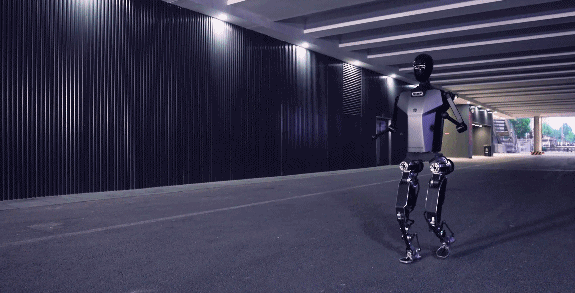Running Robot Tiangong Unveiled

A video clip shows how general-purpose humanoid robot Tiangong runs.
(PHOTO: Beijing Humanoid Robot Innovation Center)
By Staff Reporters
On April 27, China unveiled Tiangong, a self-developed general-purpose humanoid robot that stands out for its ability to run solely on electric power. It is the first of its kind.
Developed by the Beijing Humanoid Robot Innovation Center Co., Tiangong is 1.63 meters tall and weighs 43 kilograms. It can run like humans, maintaining a steady speed of six kilometers per hour.
Achieving human-like running in a humanoid robot is challenging due to significant structural complexities, according to the CEO of the company. The robot's airborne movements during running are liable to induce instability and cause it to fall.
To enable Tiangong to run steadily, it is outfitted with several 3D vision sensors. It also has the capacity to process 550 trillion operations per second, along with high-precision inertial measurement units. Plus, it is also equipped with high-precision six-axis force sensors to provide accurate force feedback and help maintain dynamic balance.
In addition, Tiangong employs a self-developed method for learning human-like motion skills. Its developers collected a vast amount of data including human motion videos in advance and extracted the position and velocity information of each joint from robots’movements for Tiangong to learn from. By mimicking these movements, it can adapt to a wide range of situations.
As an independently developed humanoid robot open to broader industry adoption, Tiangong offers open-source compatibility, allowing for further expansion and facilitating broader commercial applications.







